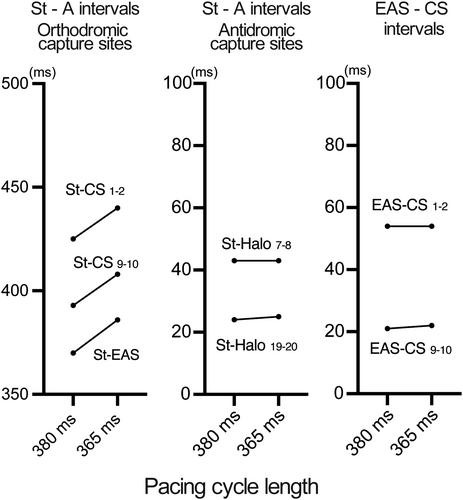腺苷敏感性房性心动过速慢传导区的传导特性下降
IF 2.2
Q2 CARDIAC & CARDIOVASCULAR SYSTEMS
引用次数: 0
摘要
对于起源于房室结附近的腺苷敏感性房性心动过速,从右心房前部开始的超速起搏显示出持续和渐进的融合,表明起搏部位位于慢速传导的近端。缩短起搏周期长度可延长正向捕获点的传导时间,而反向捕获点的传导时间则保持不变。慢速传导区有限的递减传导特性支持了房室结样组织残余沿房室环参与其中的假设。本文章由计算机程序翻译,如有差异,请以英文原文为准。

Decremental conduction property in the slow conduction zone of adenosine-sensitive atrial tachycardia
In the case of adenosine-sensitive atrial tachycardia originating near the atrioventricular (AV) node, overdrive pacing from the anterior right atrium showed constant and progressive fusion, indicating that the pacing site is proximal to slow conduction. Shortening the pacing cycle length prolonged conduction times to the orthodromic capture sites; they remained unchanged at the antidromic capture sites. Limited decremental conduction property in the slow conduction zone supports the hypothesis that AV node-like tissue remnants along the AV annulus are involved.
求助全文
通过发布文献求助,成功后即可免费获取论文全文。
去求助
来源期刊

Journal of Arrhythmia
CARDIAC & CARDIOVASCULAR SYSTEMS-
CiteScore
2.90
自引率
10.00%
发文量
127
审稿时长
45 weeks
 求助内容:
求助内容: 应助结果提醒方式:
应助结果提醒方式:


